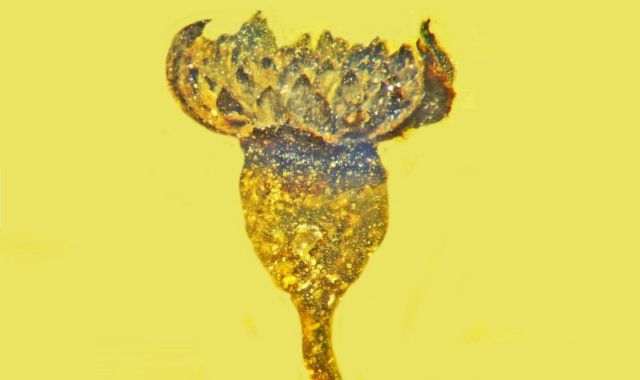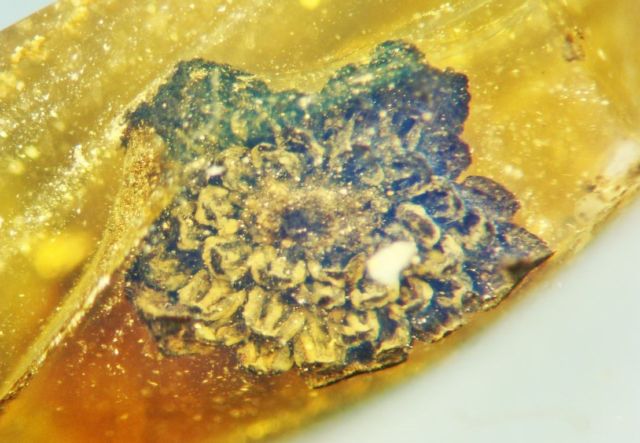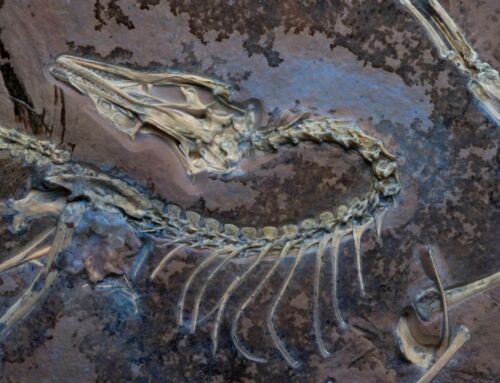Scientists discovered a new species of flower astonishingly well preserved in 100-million-year-old amber.
Oregon State University researchers have identified a spectacular new genus and species of flower from the mid-Cretaceous period, a male specimen whose sunburst-like reach for the heavens was frozen in time by Burmese amber.
George Poinar Jr., professor emeritus in the OSU College of Science, an international expert in using plant and animal life forms preserved in amber to learn more about the biology and ecology of the distant past, said:
“This isn’t quite a Christmas flower but it is a beauty, especially considering it was part of a forest that existed 100 million years ago.”
“The male flower is tiny, about 2 millimeters across, but it has some 50 stamens arranged like a spiral, with anthers pointing toward the sky.”
A stamen consists of an anther – the pollen-producing head – and a filament, the stalk that connects the anther to the flower.
“Despite being so small, the detail still remaining is amazing,” Poinar said. “Our specimen was probably part of a cluster on the plant that contained many similar flowers, some possibly female.”
The new discovery has an egg-shaped, hollow floral cup – the part of the flower from which the stamens emanate; an outer layer consisting of six petal-like components known as tepals; and two-chamber anthers, with pollen sacs that split open via laterally hinged valves.
Poinar and collaborators at OSU and the U.S. Department of Agriculture named the new flower Valviloculus pleristaminis. Valva is the Latin term for the leaf on a folding door, loculus means compartment, plerus refers to many, and staminis reflects the flower’s dozens of male sex organs.
The flower became encased in amber on the ancient supercontinent of Gondwana and rafted on a continental plate some 4,000 miles across the ocean from Australia to Southeast Asia, Poinar said.
Findings were published in the Journal of the Botanical Research Institute of Texas.
Images: Valviloculus pleristaminis. Credit Oregon State University
source Oregon State University







Leave A Comment